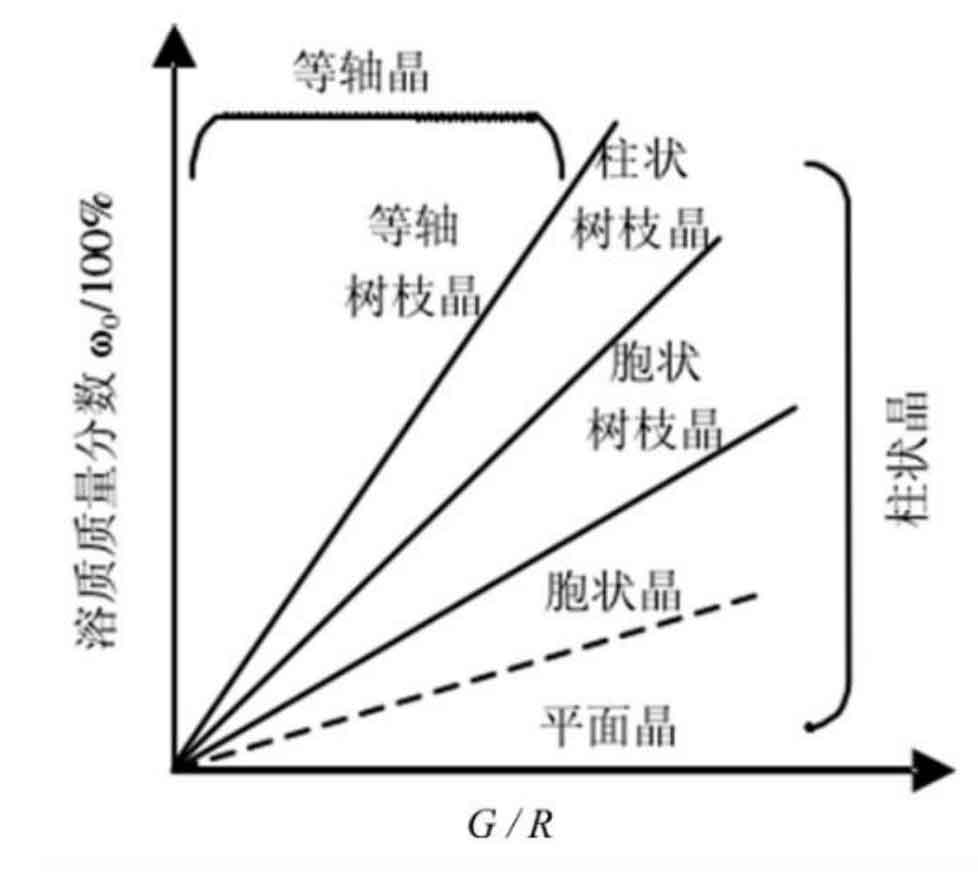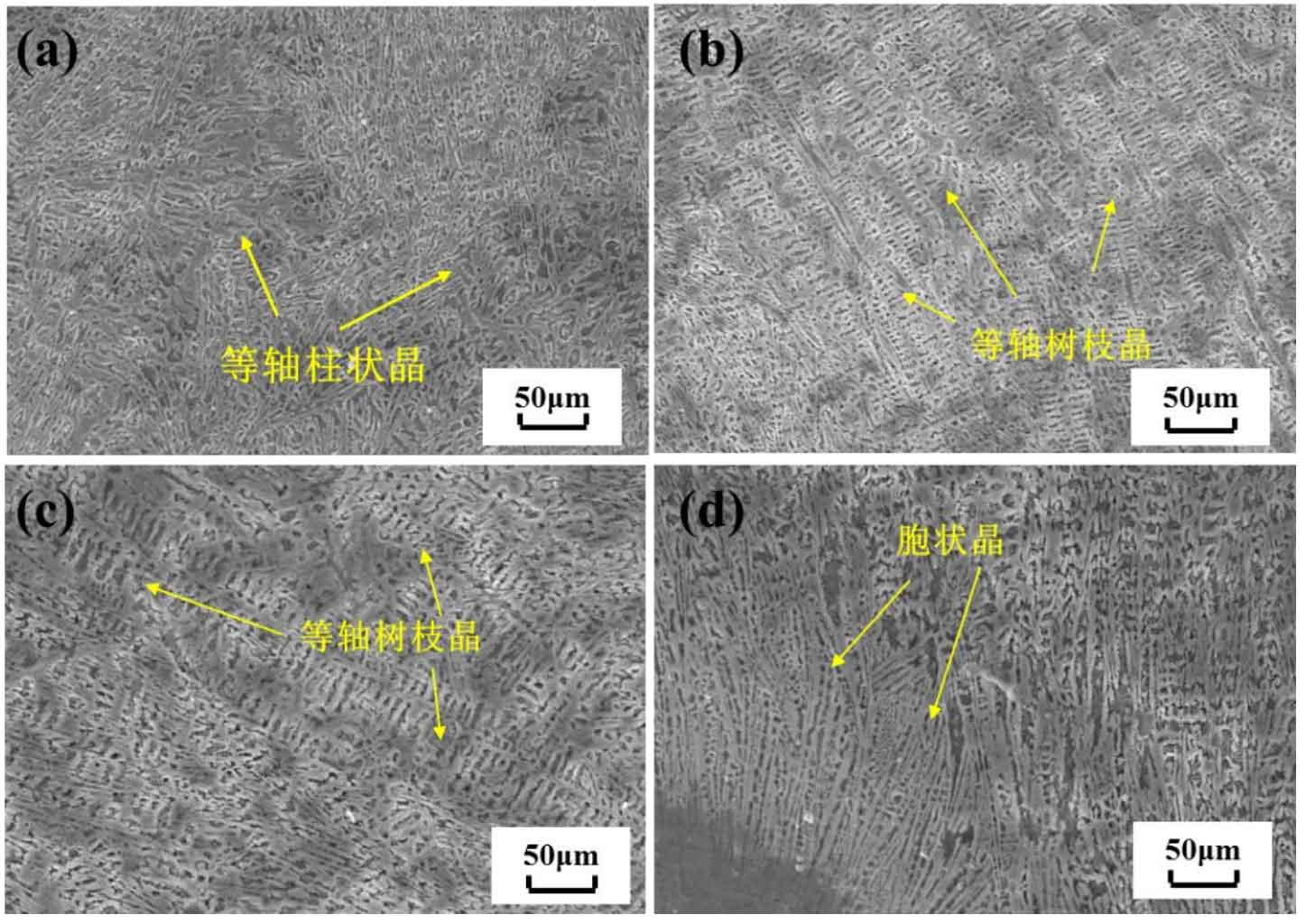In the process of rapid cooling of the molten pool, due to the extremely fast cooling speed, non-equilibrium solidification occurs in the molten pool. According to the rapid solidification theory, the crystal morphology in the molten pool mainly depends on the composition and shape control factors of the liquid phase in the molten pool. Under non-equilibrium solidification, these two factors will lead to different crystal morphology. During the laser melting process of gray cast iron, the liquid phase composition in the molten pool is constant, so the crystal morphology in the melting layer of gray cast iron is mainly determined by the size of the shape control factor, which is the ratio g / R of temperature gradient g and solidification speed r, as shown in figure 1.
According to the experimental analysis, the grain morphology of the melting layer of gray cast iron from the surface down shows the composite solidification structure of columnar dendrite, equiaxed dendrite and cellular crystal, as shown in Fig. 2. On the surface of the molten pool, the temperature gradient is the smallest. Due to the convection of the air outside the molten pool, the solidification speed on the surface of the molten pool is the fastest and the value of g / R is the largest. Therefore, the crystal on the surface of the molten pool is a coarse columnar crystal structure with disordered growth direction, as shown in Fig. 2 (a). Due to the short residence time in the liquid phase at the top of the molten pool, the cementite dendrite solidifies without sufficient time growth, so the cementite structure is more disordered. In the middle of the gray cast iron melting layer, with the increase of the distance from the surface of the molten pool, the temperature gradient increases, the solidification speed slows down, and the value of g / R gradually increases. Due to the large amount of solute in the molten pool, the columnar dendrite changes to a smaller equiaxed dendrite in the middle of the gray cast iron melting layer, and the dendrite growth direction is arranged along the heat flow direction, as shown in Fig. 2 (b). Due to the intense heat flow movement in the molten pool, the dendrites growing in the reverse heat flow direction cross and collide with each other, making their growth direction more disordered, as shown in Fig. 2 (c). These fine carbide dendrites play a good role in strengthening the strength of the melting layer of gray cast iron, and the dense arrangement is conducive to the improvement of wear resistance. At the junction of the bottom of the molten pool and the heat affected zone, the temperature gradient G is the largest and the solidification speed is the slowest, so that the value of g / R is the largest, and the elements at the bottom of the molten pool continue to diffuse to the middle of the molten pool under the convection of the molten pool. Therefore, there are less solute elements at the bottom of the molten pool, and the grains form prominent cellular crystal structure, as shown in Fig. 2 (d).


